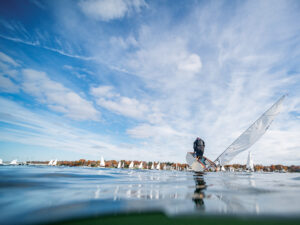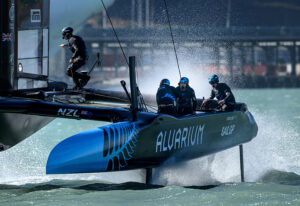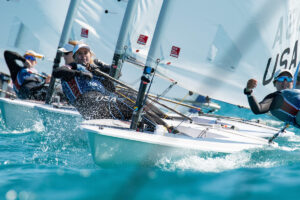
Ericsson Details
When it comes to building a boat for a high-stakes race such as the Volvo, you better believe the devil is in the details, and when it comes to detailing, Ericsson Racing Team crewmember and builder Jason Carrington is hailed as the best in the business, a master who stops at nothing to get weight where it belongs-in the keel bulb. We got an exclusive tour of his latest masterpiece as the team prepared to start the 31,000-mile ocean racing marathon. Where do you start? The designer gives you a weight that’s very definitive-it’s got every nut and bolt and what the boat should weigh. Then he tells you what the bulb should weigh if you build the boat properly. Every kilo you save on top of number goes to the bulb. By being clever with lighter deck gear and different layouts you can save that weight. But on top of that the designer says it the build won’t be exact so he allows a margin. What we try to do is never go into that margin on anything-whether it is the deck, hardware, a bulkhead, or a fitting. If you don’t go into the margin you save 260 kilos (573 lbs.) straight away and that goes into the bulb. Everything you build, you weigh, and if it’s in the margin, you throw it away and start again. You’re the only one with a deck hatch. We did that strictly for the inshore racing, although we do use it offshore sometimes. We drop and launch straight through the hatch, which is by far easier. Was the engineering more complicated than it was with the Volvo 60? Overall it’s less complicated, but the whole keel structure area is complicated and new to everyone. The 60s had water ballast systems, which were more difficult to build. In terms of hours, this boat was 37,000. That’s seven months, day and night shifts. Everything is custom made. What are some of your special touches? “There are bunch of little things we can do to save weight-little things like the afterguy fittings, which we use instead of the big blocks you see on some of the other boats. The aluminum fitting is only 250 grams and it has a Teflon coating so it’s really slippery. For the daggerboard fittings and the footblocks we use half-moon blocks with no sheave. If we add up these various bits it’s about 10 kilos (2.2 lbs.) in the bulb. Why do some boats have a spinnaker pole and others not? With the spinnaker pole you need a jockey pole, two afterguys, fittings, and the total weight is 80 kilos (176 lbs.) If you take the pole you have to pay for it, and if you don’t you put the weight straight to the bulb. We feel the gains of taking the pole out weight the weight penalty. How does Ericsson differ from the other Farr boats. Our deck layout is much different than the layout of say, Brasil 1, which is exactly off the Farr drawings; we have lots of small differences. For example, our chainplates are angled forward (for less windage), the geometry of the cockpit is narrower to get more room on deck for stacking sails, the runner tails go under the floor so when you stack the sails you don’t put them on top of the runners. The spin sheets are run under the deck. The VO 70 is supposed to be more comfortable for the sailors; has that happened? The boats are much more comfortable. Without water ballast tanks you get a lot more volume inside the boat, which helps. One thing we’ve done is make the bunks about two inches wider, and I’ve installed a hot-air tube running down the hull alongside the bunks, powered by a small diesel heater. There’s a proper nav station with more headroom, and a separate media center, both are fairly tricked out. One final thing we managed to do is get all our tanks, fuel and water, directly on centerline, which helps open up the working space. Why is the canting-keel system the most heavily guarded secret in these boats? The keel-frame area is the heart of the boat and a lot of energy and worry went into ours. We’re still worried about it because if something goes wrong we’re like a dog with three legs. The whole keel frame tower is the strongest and heaviest part of the boat-it’s the most structural part of the boat, too. To give you some perspective, the keel frame weighs 120 kilos (265 lbs.), the area between the two bulkheads weighs about 60 kilos (132 lbs.), and the ring frame farther aft at the companionway weights about 7 kilos (15 lbs.). [With the keel hydraulics themselves] there are a few different suppliers, but none with experience with boats like this. We had to drum into them the weight implications; you want the most reliable and you want it as light as possible, and these two things don’t go hand in hand.









